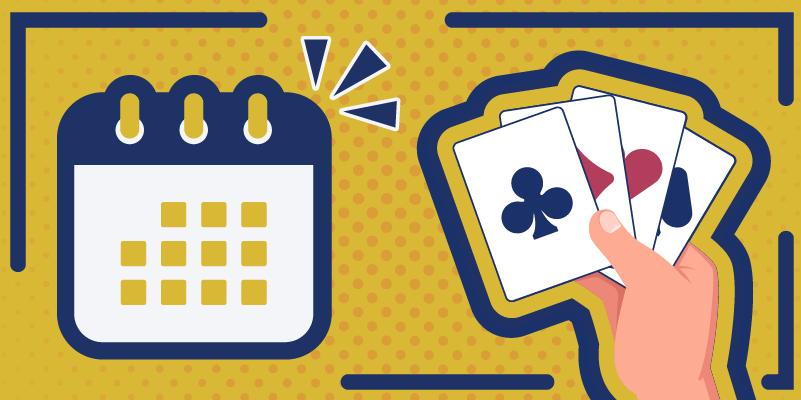


Many of you recently took part in a poll on your 4 favorite conventions from Barbara Seagram's famous book, 25 Bridge Conventions You Should Know. If you haven't seen it you can find the poll in Larry Cohen's article, Conventions. How many are too many?
It's very interesting to see that Barbara's top 10 (as discussed in Barbara's reply to Larry's posts - find it here) are spot on, matching exactly the preferred top 10 as voted for in the survey.
Larry's top 4 are also very high up the list, as you'd expect; especially if you don't consider weak two bids, 2C opening and takeout doubles as being conventions, but as intrinsic parts of the bidding system itself.
Here are the results (4297 respondents):
| Convention | Votes | % of resp. | Larry's top 4 | Barbara's top 10 |
|---|---|---|---|---|
| Stayman | 3648 | 85% | ♠ | ♠ |
| Weak Two-Bids | 1985 | 46% | ♥️ | |
| 2♣ Strong Artificial Opening | 1750 | 41% | ♥️ | |
| Takeout Doubles | 1590 | 37% | ♥️ | |
| Jacoby & Texas Transfers | 1444 | 34% | ♠ | ♠ |
| Blackwood & Gerber | 1404 | 33% | ♠ | ♠ |
| Negative Doubles | 1267 | 29% | ♠ | ♠ |
| Roman Key Card Blackwood | 1090 | 25% | ♥️ | |
| Jacoby 2NT as a Major Suit Raise | 659 | 15% | ♥️ | |
| Fourth Suit Forcing | 307 | 7% | ♥️ | |
| Michaels Cuebid & Unusual NT | 285 | 7% | ||
| Reverses | 248 | 6% | ||
| Cuebid Raises | 235 | 5% | ||
| New Minor Forcing | 234 | 5% | ||
| Splinter Bids | 127 | 3% | ||
| Landy 2♣ over an Opponent's 1NT | 116 | 3% | ||
| Lebensohl | 116 | 3% | ||
| Control-showing Cuebids | 78 | 2% | ||
| Balancing | 75 | 2% | ||
| Reverse Drury | 75 | 2% | ||
| Ogust Responses | 66 | 2% | ||
| Help Suit Game Tries | 50 | 1% | ||
| Lead-directing Doubles | 48 | 1% | ||
| Responsive Doubles | 32 | 1% | ||
| Pick-a-Slam | 20 | 0.5% |
To find out more about Barbara Seagram's book 25 Conventions You Should Know click here.




Sorry Larry, I’m with Barbara. Now, what’s my lead…?
Hint hint!
Lighten up everyone. You can play what you want. And remember, some people’s minds are like concrete … Thoroughly mixed up and permanently set.
Lighten up everyone. You can play whatever you want. And remember, never shout into a colander. It’ll strain your voice.
Let's take 1NT. This requires 5 officers, 8 passengers. No more that 2 stewardesses (Queens). The passengers should be spread as evenly as possible about Flight 1NT.. A Maximum of 7 Fat ones (Hearts and spades), If a row is unfilled (a doubleton) its biggest one should be bigger than the biggest one of the 5).
All aboard on happy flight 1NT (probably 16-18). No problems. What exactly is the STAYMAN chap doing?
A complete load of rubbish. Any Convention is needed from the result of a bid failing the 68% standard test. Don't make any mistakes and you will not need a convention. Only if a partnership persists in an error then they should consider adding a convention. Blackwood was added for 'old grannies' in the early 1930's and caused an uproar. If bidding did not need them for 100 years why now?
Reverses are NOT a convention :).
Everybody needs a structure to bid over 1NT openings, but Stayman is overrated. It unnecessarily provides information to opps about the closed hand, much better to inform opps of a 4 card major in dummy only which they will get to see anyway. And it sometimes leads to 3NT with two opposing small doubletons in the same suit. There are better alternatives.
A 2!c opening that is unilaterally strong is not a sound idea, you need some protection against preemptive intervention by adding weak hands into strong openings. Also the burden of having all strong hands in a single bid is too heavy, it needs to be spread over multiple openings.
As for the weak two and takeout doubles, yes, you can't do without.
the responses should have been corrected with the frequency of the each appearance of the need of use it. what about 5 card major? can someone provide a list of these percentage of occurrence? 30% pass, 20% 5 card major, 15% preemptive, 10% 1nt, 5% 2nt, 1% 2C, rest bicolor
Support doubles did not make the list????? Amazing!
The come up so often.
How can I save this list? Or send it to myself and friends?
An image of the vast majority of bridge players' education, level, and the one of most teachers: quite poor...